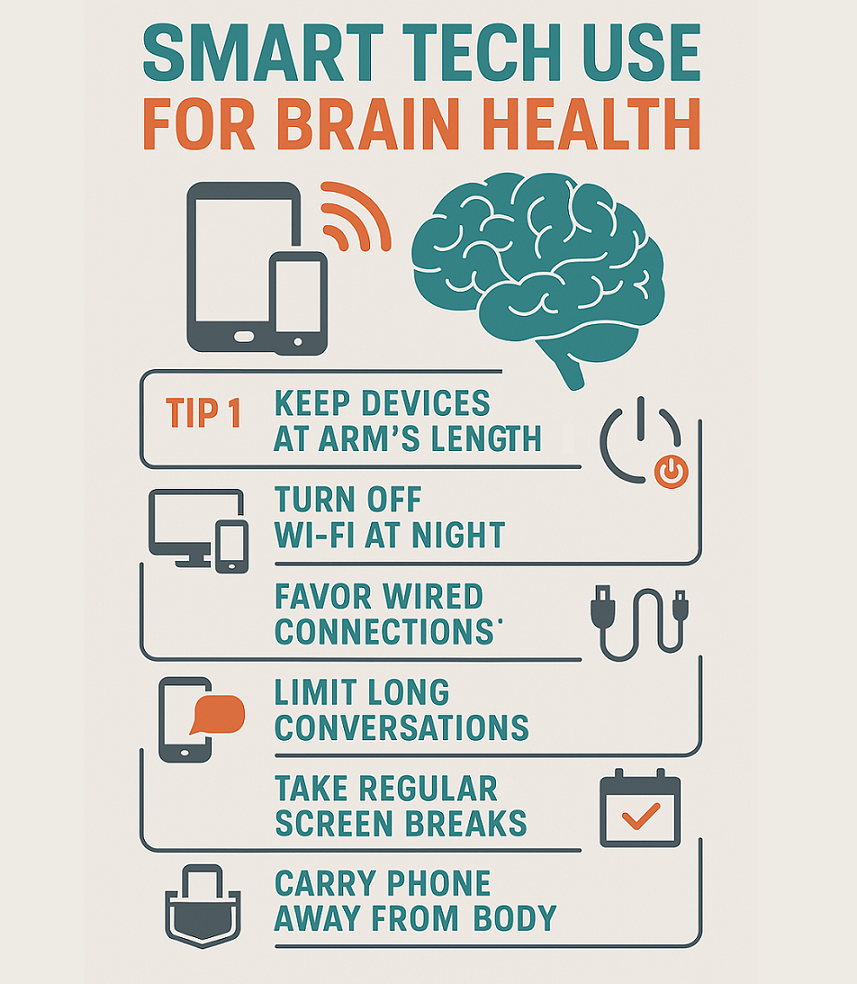
Once the territory of conspiracy theorists and science fiction novels, the idea that electromagnetic fields (EMFs) affect the human brain is now attracting serious scientific attention. From Wi-Fi routers to smartphones, we’re swimming in an invisible ocean of electromagnetic radiation—but what’s it really doing to our neurons?
In response to rising concerns, a new wave of products—from “neuro-shield” phone cases to EMF-blocking apparel—has hit the market, promising to protect our most precious organ. But separating fear from fact isn’t easy in a world buzzing with both wireless signals and wild claims.
Contents
What Are EMFs, Anyway?
Electromagnetic fields are areas of energy that surround electrical devices. They’re produced by natural sources (like the Earth’s magnetic field and sunlight) and manmade technologies (like cell phones, microwaves, power lines, and Wi-Fi networks).
EMFs are typically classified into two main categories:
- Low-frequency EMFs: Found in everyday appliances, Bluetooth devices, and power lines. Generally considered less biologically active.
- High-frequency EMFs: Includes higher energy sources like X-rays and gamma rays, which are ionizing and known to damage cells directly.
Most modern wireless technology—including 5G, Wi-Fi, and smartphones—operates at non-ionizing (low-energy) frequencies. But even at these lower energies, some researchers believe there could be subtle biological effects, particularly with chronic, long-term exposure.
How EMFs Interact with the Brain
Unlike ionizing radiation, which can break chemical bonds and directly damage DNA, non-ionizing EMFs don’t have enough energy to cause immediate cellular destruction. However, they can interact with biological systems in less obvious ways:
Potential Effects of EMF Exposure:
- Thermal Effects: Very high levels of EMF can slightly heat tissues—this is the principle behind how microwaves cook food. However, cell phones and Wi-Fi emit EMFs far below levels that cause significant heating.
- Oxidative Stress: Some studies suggest prolonged EMF exposure may increase the production of free radicals, potentially leading to oxidative damage in cells, including neurons.
- Blood-Brain Barrier Changes: Limited animal studies have indicated that intense EMF exposure might temporarily affect the permeability of the blood-brain barrier, which protects the brain from toxins.
- Sleep and Cognitive Disruption: EMFs may interfere subtly with circadian rhythms or brainwave activity, particularly if exposure occurs during sleep hours.
It’s important to note: while some studies have shown these effects under specific experimental conditions, the results are often inconsistent or not easily replicated. The scientific community remains divided on the significance of low-level EMF exposure on human brain function.
Separating Science from Scare Tactics
Let’s be clear: no major health authority (including the World Health Organization, FDA, or CDC) currently recognizes everyday EMF exposure from devices like phones and Wi-Fi routers as a proven brain health hazard. That said, the science is far from “settled.”
Reasons for Caution (But Not Panic):
- Biological Complexity: The human brain is an extraordinarily sensitive and complex organ. Subtle influences that don’t cause immediate harm might still have long-term impacts, especially in vulnerable populations (e.g., children, developing fetuses).
- Cumulative Exposure: Our exposure to EMFs has dramatically increased over the past few decades, and the effects of lifelong, 24/7 exposure are not fully understood.
- Individual Sensitivity: Some individuals report “electromagnetic hypersensitivity” symptoms (like headaches, fatigue, cognitive fog) around high-EMF environments, although scientific validation of this condition remains controversial.
In short, while there’s no solid proof that EMFs are “brain poison,” there’s enough uncertainty to warrant reasonable prudence.
What Are Neuro-Shields—and Do They Work?
With growing public concern, a cottage industry of “neuro-shield” products has emerged, promising to block or deflect EMF exposure. Common offerings include:
- Phone cases with EMF-blocking materials
- EMF-shielding hats and clothing
- Home shielding devices (paint, curtains, bed canopies)
- Wearable pendants or “harmonizers” (more pseudoscientific in nature)
Do They Help?
- Partial Protection: Some shielded phone cases can reduce localized EMF exposure by reflecting signals away from the body—but they must be used correctly and may degrade signal strength.
- Limited Scope: Most shielding devices only cover small areas. Full environmental protection would require extensive (and often impractical) measures.
- Placebo Effects: Some users report feeling better simply by believing they’re protected, which could reflect psychological rather than physiological effects.
Bottom line? Some shielding products offer partial benefits, but none can completely eliminate exposure in a connected world. Choosing reputable, scientifically tested products is crucial if you’re concerned about real-world effects.

Practical Ways to Minimize EMF Exposure (Without a Tinfoil Hat)
Whether or not you buy a neuro-shield, you can take simple, commonsense steps to reduce unnecessary EMF exposure:
- Distance matters: Keep phones, tablets, and laptops away from your body when not in use.
- Use wired connections: Whenever possible, choose Ethernet over Wi-Fi and wired headphones over Bluetooth.
- Nighttime caution: Turn off Wi-Fi routers at night and avoid sleeping with your phone next to your head.
- Limit call time: Use speakerphone or a wired headset to minimize brain exposure during long conversations.
- Be device-aware: Don’t carry your phone in your pocket all day if you can help it—especially near sensitive areas like reproductive organs.
Mindful, Not Fearful
We live in an increasingly electromagnetic world, and cutting ourselves off completely from technology isn’t realistic—or even necessary. But understanding the real science behind EMFs empowers us to make informed, mindful choices about how we interact with our environment.
Your brain doesn’t need a tinfoil hat. It needs you to stay informed, stay curious, and practice balanced, evidence-based habits that nurture long-term cognitive health.
Technology is a tool. And like any tool, it’s how we use it—not just what it is—that ultimately shapes its impact on our minds.

